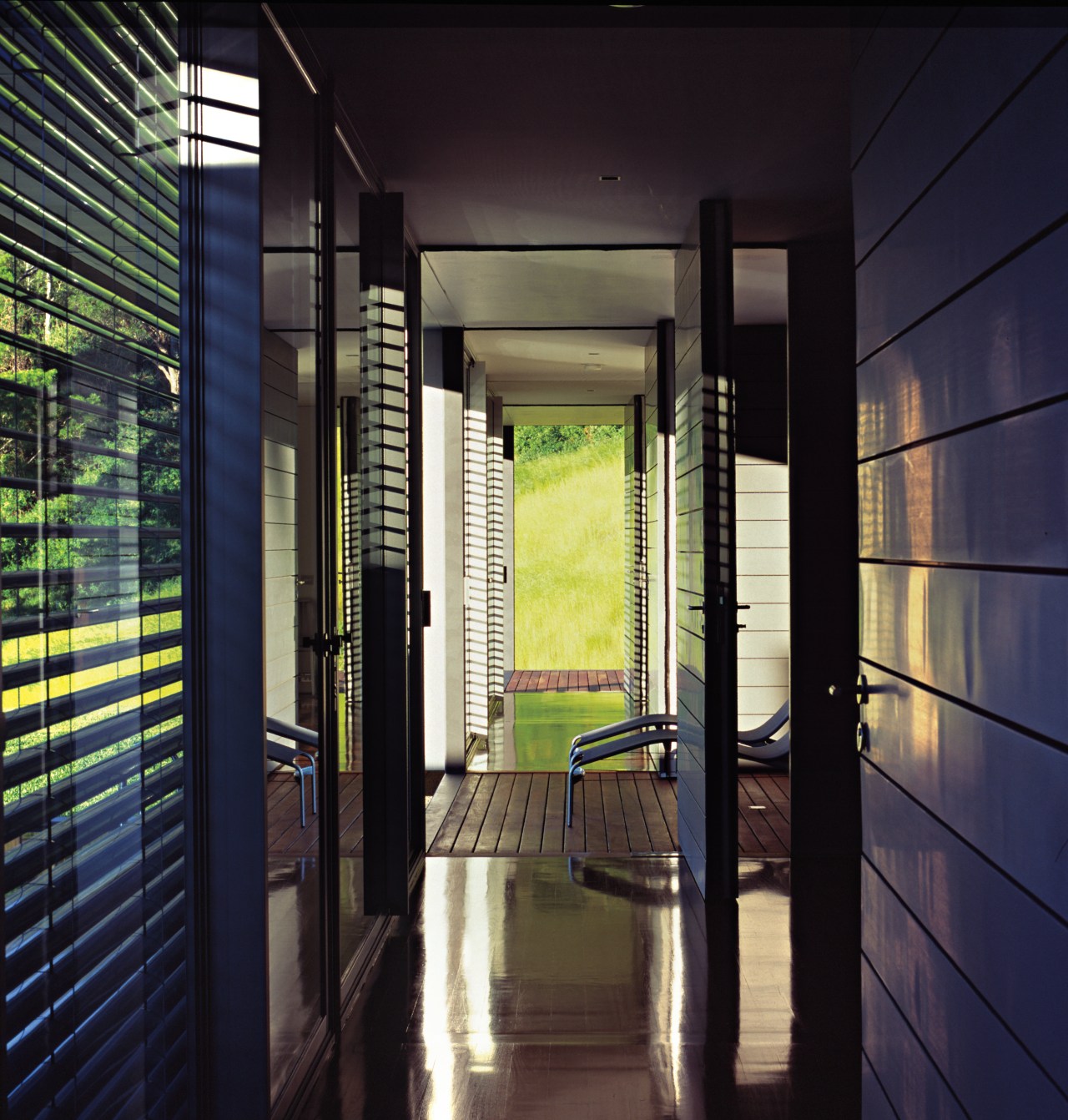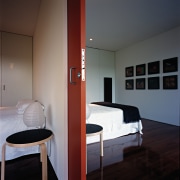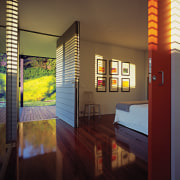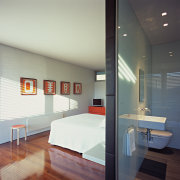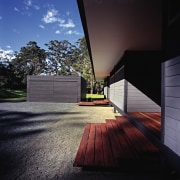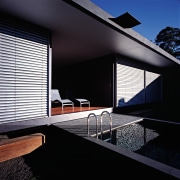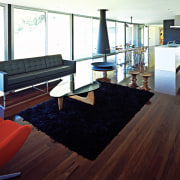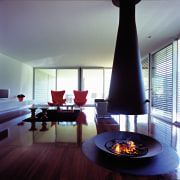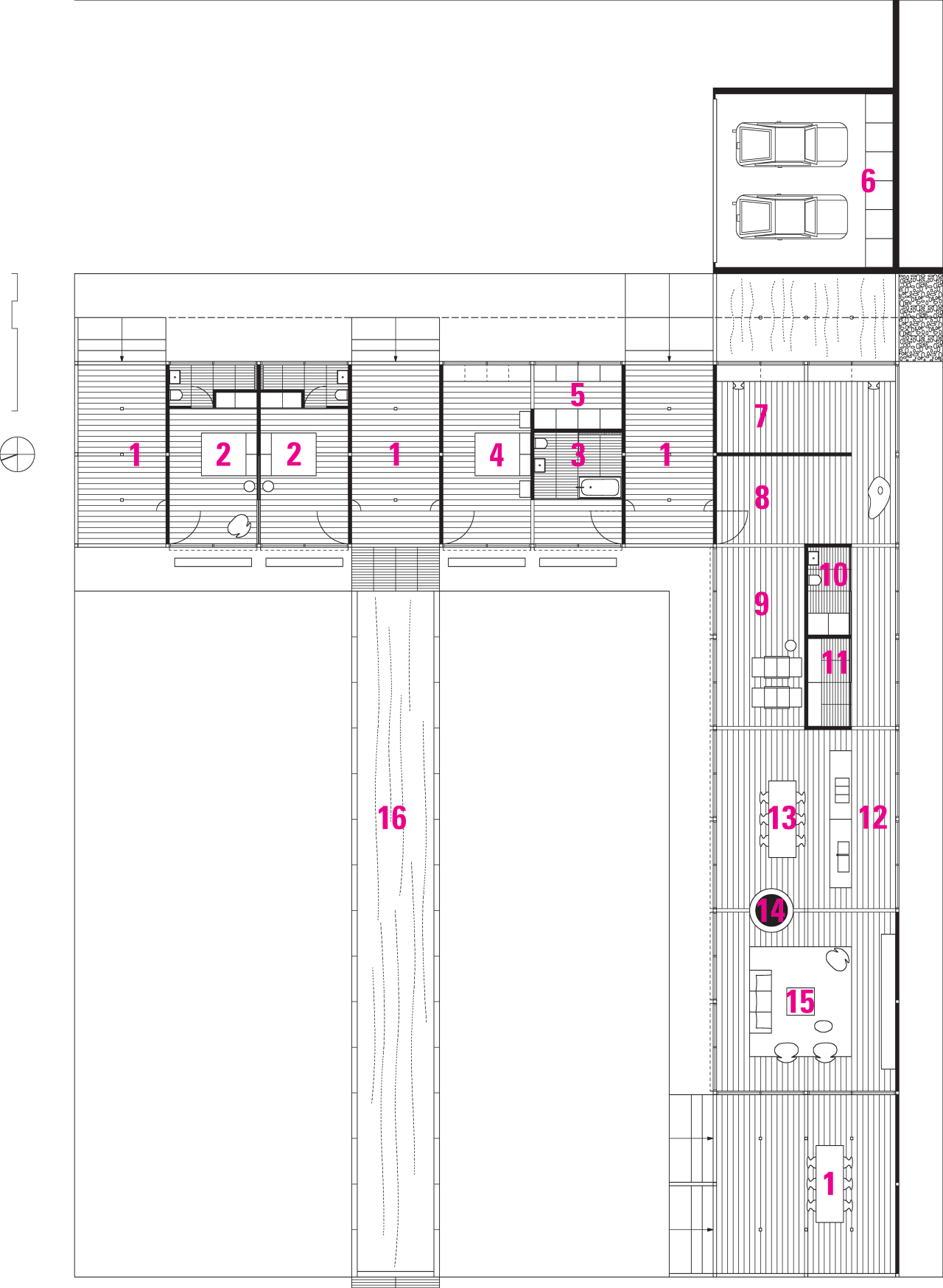At home with the landscape
Muted tones, simple lines and a low-rise design allow this rural retreat to settle into the landscape
Planning a home on a large rural site offers the freedom to explore options that aren't usually available in a suburban setting. For example, a home can spread out horizontally, rather than vertically, allowing the owners to live close to the land.
Designing a home that extends over just one storey also helps to blur the distinction between the indoors and outdoors, says Rita Qasabian of Studio Internationale, the architectural practice responsible for the design of this contemporary rural residence.
The owners of the plot 25ha of woods and pasture land had stayed at a nearby holiday retreat designed by the same firm of architects. They liked the way that the architects had developed a simple modular concept, and commissioned Studio Internationale to design their new rural retreat along similar lines.
Taking the modular design as a starting point, Qasabian created two separate living and sleeping pavilions at right angles to each other. These are connected through large covered external decks to form an L-shaped building.
"This movement between the pavilions gives a sense of connection to the landscape," says Qasabian.
"This is a building that doesn't stand out rather, it is one that you can see through. The fact that we've broken down the mass takes you back to the land, allowing the building to share space with nature."
The horizontal quality of the house is accentuated by large overhanging eaves that provide solar protection. Materials also help the home to blend in with the landscape, says Qasabian. The owners were happy to move away from a typical timber finish. They also appreciated the fact that the pre-weathered zinc chosen to clad the home's steel skeleton was virtually maintenance-free.
"The zinc will age slightly over time, taking on a slightly deeper tone, but as it is already weathered it shouldn't change too much," says Qasabian. "There is a slight blue quality to the zinc, which allows it to take on the tones of the sky. The zinc also has a reflective quality, which allows it to blend with the green of the landscape."
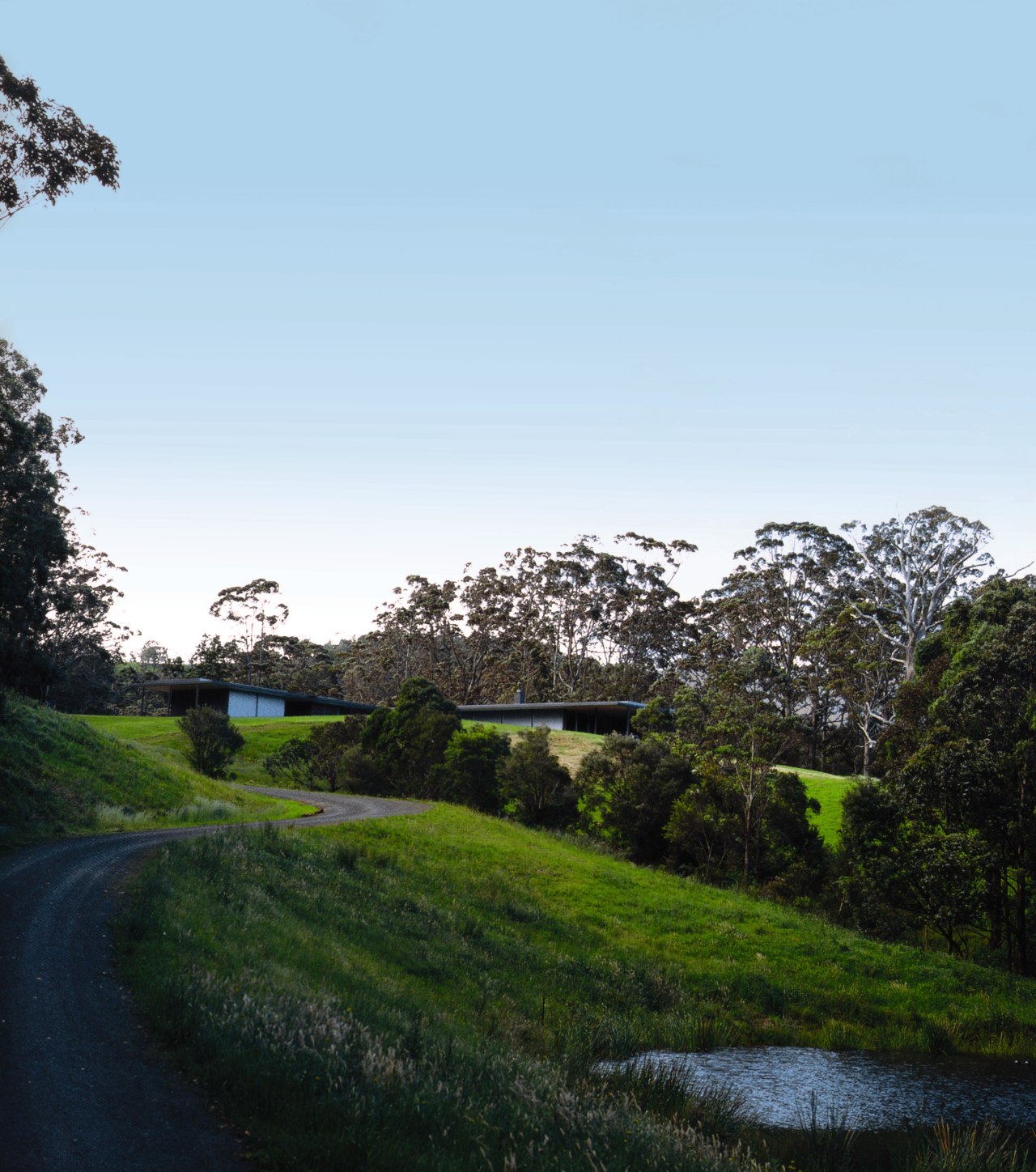
The floor of the home is raised 650mm off the ground, creating a sense that the building is touching the earth lightly, says Qasabian.
"This isn't a heavy building. To emphasise this, we designed a separate garage block that is anchored firmly on the ground. Its darker charcoal zinc cladding provides a contrast to the lighter, raised main building."
Materials used for the exterior are repeated internally, to establish a visual continuity. Recycled grey ironbark, specified for its hardness and brown-grey tones, was used for both external decking and internal flooring.
"Timber is an important element inside, especially in the main living space," says Qasabian. "It's a natural material, so no two planks are alike. This quality brings a relaxed, comfortable quality to the space."
As most of the interior is open plan, the study area was created as a closed space, to provide a cosy separation. The other closed area is a zinc-clad pod in the open-plan kitchen, dining and living area that conceals a laundry, guest bathroom and walk-in pantry.
The relationship between different elements, such as the timber floor planks, stone tiles and external decking, was considered so that the dimensions of each either match the other or are in a pleasing proportion. Likewise, ceiling heights and window dimensions were specified to reflect the dimensions of the home's external frame and cladding. This creates a sense of order that is felt subconsciously by the homeowners, says Qasabian.
"A calmness prevails when elements of a home are in proportion people can feel that without really knowing why."
A circular wood-burning fireplace with a telescopic hood provides warmth during the cooler months. The structure also functions as a piece of sculpture, marking the division between living and dining areas without taking up too much space or blocking sight lines from one area to the next.
Lighting throughout the home is subtle, in keeping with the home's rural environment.
"The clients shared our interest in lighting, and created a relaxed ambience by using plenty of lamps," she says. "Outside, the uplights are quite subdued, as we didn't want bright lights flooding the area and spoiling the view of the stars."
A 25m-long lap pool also links the home with nature. Its infinity edge allows the pool to visually merge with the landscape and the mountains in the distance. And, like the home, the pool is raised slightly off the ground.
"This makes the pool look like a water trough, extending out towards the escarpment and the mountains," says Qasabian.
A raised planted lawn either side of the pool extends the home's outdoor living space, delineating it from the rough paddock land beyond the immediate environs of the building. Apart from the water garden at the home's entrance, which features water lilies, formal planting is kept to a minimum.
"The owners weren't interested in creating a garden they love the natural quality of the site and wanted to live among the environment."
Credit list
Interior designer
Roofing
Lighting
Furniture
Wallcoverings and tiles
Outdoor lighting
Pool builder
Kitchen designer and manufacturer
Blinds
Flooring and decking
Heating system
Outdoor furniture
Pool designer
Special features
Story by: Trendsideas
Home kitchen bathroom commercial design
